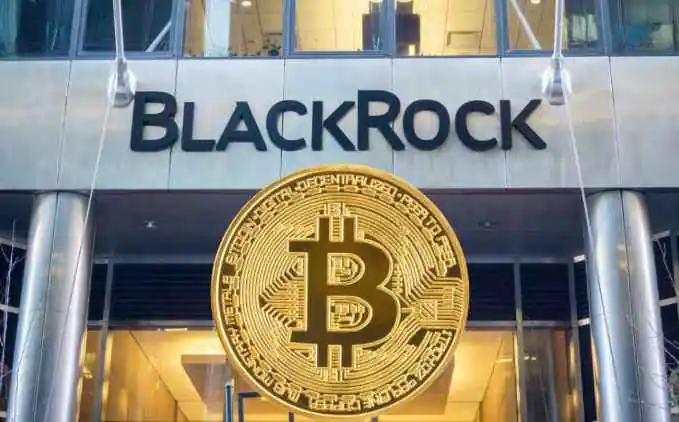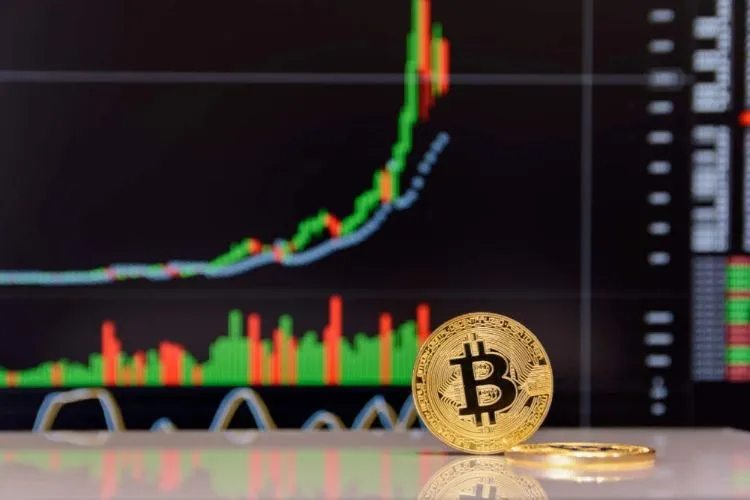BlackRock promotes Bitcoin ETF Spot
The former BlackRock director has suggested preparing for a potential influx of $17.7 trillion into Bitcoin if certain conditions are met. Bitcoin could see a substantial capital flow of $17.7 trillion from institutional investors, as a former BlackRock executive predicts imminent approval for Bitcoin spot ETFs in the United States.
While some market participants have dampened hopes regarding the SEC’s approval of Bitcoin spot ETFs, others remain optimistic. According to Steven Schoenfield, former CEO of BlackRock, spot Bitcoin ETFs are on track to penetrate financial institutions within the next three to six months.
The approval of Bitcoin spot ETFs is now within close reach. The SEC has faced significant pressure to approve various applications for Bitcoin spot ETFs in recent months. Recently, several U.S. senators have voiced their support, urging the SEC to expedite the registration process.
Many analysts have speculated that approval could come as early as the beginning of 2024. Bloomberg analysts estimate that the likelihood of approval has already risen to 75%.
Steven Schoenfield, currently the CEO of MarketVector Indexes, initially proposed a “nine to twelve-month” timeline for SEC approval.
However, he has since revised this timeline, considering recent updates. Speaking at a discussion on ETFs at the CCData Digital Asset Summit in London, Schoenfield stated that a Bitcoin spot ETF could potentially hit the market within “three to six months.”
“The SEC may approve all Bitcoin spot ETF applications simultaneously. Don’t think they want to give an advantage to early adopters. Instead of outright rejecting the entire list, they are soliciting comments, which is a small but significant improvement in the dialogue,” Schoenfield remarked.
Potential Game Changer for the Market
Leading cryptocurrencies have witnessed a significant uptick in interest from Bitcoin spot ETF applications, and approval could reshape the digital asset market and propel BTC to new highs. North America, particularly the United States, currently accounts for 98% of the total trading volume of cryptocurrency futures ETFs.
If approved, Bitcoin spot ETFs could open the floodgates for massive capital inflows from institutional investors, amounting to $17.7 trillion from financial institutions. According to senior Bloomberg analyst Eric Balchunas, this could push North America’s ownership ratio to over 99.5%.
BlackRock alone, currently leading in terms of Bitcoin spot ETF fees, manages over $9.4 trillion in assets under management (AUM). Other giants on Wall Street, such as WisdomTree, Invesco Galaxy, Valkyrie, and VanEck, are also awaiting approval.
Reducing Bitcoin’s supply through a process known as “halving” plays a crucial role in exploring its price dynamics and market psychology. Bitcoin, as the pioneering cryptocurrency, has gained widespread attention and popularity over the years.
Among various factors that influence its price, the notable Bitcoin halving events remain pivotal in the cryptocurrency market. In this article, we will delve into why Bitcoin halving continues to be a significant factor for BTC prices.
Bitcoin Halving: A Brief Overview
Bitcoin halving, often referred to as “halving,” is a scheduled event occurring approximately every four years or after every 210,000 mined blocks. During a halving, the reward received by Bitcoin miners for validating transactions and adding new blocks to the blockchain is halved.
This effectively reduces the rate at which new Bitcoins are created by 50%. Let’s explore the reasons why this event holds such importance:
Supply and Demand Dynamics
One of the fundamental economic principles at play during a Bitcoin halving is the law of supply and demand. Bitcoin has a limited and finite supply of 21 million coins. When the rate of new coin creation is halved, it creates scarcity in the market.
Assuming that demand for Bitcoin remains stable or increases, this scarcity effect can push prices higher. Investors and enthusiasts often anticipate that this reduced supply will lead to increased demand.
Historical Price Patterns
Examining past Bitcoin halving events reveals an intriguing trend. In the year following each halving event, Bitcoin prices have tended to surge significantly. While past performance doesn’t guarantee future results, this historical pattern has garnered attention from both investors and analysts.
The idea that reduced supply could lead to price increases serves as a compelling motivation for many to closely monitor these events.
Reduced Selling Pressure
With fewer Bitcoins being rewarded to miners, there is less immediate selling pressure on the market. Miners may be less inclined to sell their rewards to cover operational costs. This reduced selling pressure can help stabilize prices and prevent rapid declines.
Speculative Interest
Bitcoin halving events attract significant speculation from both retail and institutional investors. Predictions of increased demand and potential price gains can lead to speculative buying. This speculative activity can further drive prices higher as traders seek to capitalize on anticipated post-halving price surges.
A Crucial Influencer of Bitcoin’s Price
In summary, Bitcoin halving events continue to be a pivotal factor influencing BTC prices. The interplay of reduced supply, historical price patterns, diminished selling pressure, and speculative interest creates an environment where price movements are often anticipated.
However, it’s essential to remember that Bitcoin’s price is influenced by numerous factors, including market psychology, macroeconomic conditions, regulatory developments, and technological advancements.
>>> Bitcoin is Expected to Quadruple in Value during This Market Cycle
When Is the Next Halving?
The next Bitcoin halving event is scheduled for April 2024, reducing the block reward from 6.25 BTC to 3.125 BTC. This adjustment will occur precisely at block 840,000. Prominent digital asset investment firm New York Digital Investment Group (NYDIG) emphasizes the significant economic significance of halving from an economic perspective.
Conclusion
Bitcoin always follows cycles and exhibits a repetitive nature, as it has demonstrated throughout its developmental history. Bitcoin investors can feel confident in holding this asset and waiting for the market to appreciate in the future.









